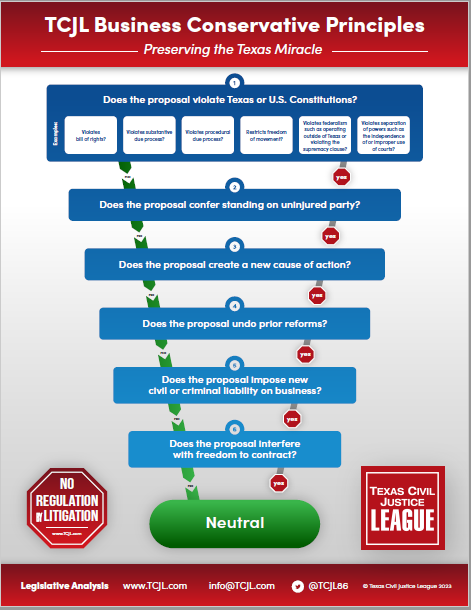 Plaintiff brought suit against the driver and owner of a commercial vehicle for personal injuries suffered in an accident. Defendants answered with a general denial and asserted affirmative defenses, including release. As they pointed out in their motion for summary judgment, plaintiff has previously sued them in her capacity as next friend for her incapacitated adult son for the purpose of memorializing a settlement agreement under Tex. R. Civ. P. 44(2) (stating that the “next friend” or his or her attorney of record may, with the approval of the court, compromise suits and agree to judgments). The final judgment in the prior suit purported to settle all claims, “including disputed claims, ‘of Plaintiff against Defendant.” It identified the son has “Plaintiff” and dismissed “any and all claims and causes of action of Plaintiff against [defendant owner] with prejudice.” It further decreed that defendant owner “stand[] fully released and discharged of and from all claims, demands, actions or causes of action arising out of the occurrence described in the pleadings herein.”
Plaintiff brought suit against the driver and owner of a commercial vehicle for personal injuries suffered in an accident. Defendants answered with a general denial and asserted affirmative defenses, including release. As they pointed out in their motion for summary judgment, plaintiff has previously sued them in her capacity as next friend for her incapacitated adult son for the purpose of memorializing a settlement agreement under Tex. R. Civ. P. 44(2) (stating that the “next friend” or his or her attorney of record may, with the approval of the court, compromise suits and agree to judgments). The final judgment in the prior suit purported to settle all claims, “including disputed claims, ‘of Plaintiff against Defendant.” It identified the son has “Plaintiff” and dismissed “any and all claims and causes of action of Plaintiff against [defendant owner] with prejudice.” It further decreed that defendant owner “stand[] fully released and discharged of and from all claims, demands, actions or causes of action arising out of the occurrence described in the pleadings herein.”
The settlement agreement, executed a few days later, defined “Plaintiff” to include other family members, including the mother, children, spouses, and heirs, as well as administrators, executors, successors, assigns, and estates. It specified the sum of $18,000 in exchange for the broad release of “any and all past, present, or future obligations, claims, demands, actions, or causes of action of any kind whatsoever as a result of the [accident]…” Further, the agreement included the plaintiff’s acknowledgement of the release of claims, that plaintiff had the benefit of counsel, and a merger clause. Plaintiff signed the agreement in both her individual capacity and as next friend of her son and acknowledged that her attorney had explained the agreement to her prior to execution.
These are the facts of Griselda Ramos v. Rodrigo Hernandez and Freight Pro Transport, LLC (No. 02-22-00393-CV; delivered August 10, 2023). In response to defendants’ summary judgment motion, plaintiff argued that a genuine, material fact issue existed as to whether she released her individual claims in the settlement agreement as opposed to her son’s, who was not a party to the second suit. She argued further that the settlement agreement was ambiguous, based on a series of emails between plaintiff’s counsel and defendant owner’s insurance company regarding her son’s medical expense affidavits, and did not show a “meeting of the minds.”
The court’s analysis centered on the ambiguity issue. Looking to its recent decision in Traweek v. Long, No. 02-20-00311-CV, 2021 WL 733085, at *4 (Tex. App.—Fort Worth 2021, pet. denied) (mem. op.), which involved a similar scenario in which plaintiff and her husband signed a release of “any and all claims” arising from a car accident in exchange of a settlement amount payable to the husband, the court observed that, as in the present case, Traweek produced communications between her counsel and defendants’ insurer attempting to settle her individual claims. These communications occurred after she had signed the release but before she filed suit. The court held in Traweek that “the release’s language contained a latent ambiguity because it allowed two reasonable interpretations of its scope: (1) the agreement released the appellant husband’s claims arising from the accident or (2) the agreement released the appellant’s derivative claims arising from her husband’s injuries, but not her individual negligence claim arising from her own injuries.” This latent ambiguity “allowed the admission of parol evidence to determine the parties’ intent regarding the release’s intended scope.” The post-release settlement negotiations, therefore, “provided objective evidence of the surrounding circumstances of the parties’ mutual understanding of the prior release’s effect and raised a genuine, material fact issue regarding the release’s scope and interpretation, making summary judgment inappropriate.” And just because plaintiff admission that she voluntarily signed and understood the release, “she did not admit what those terms meant regarding the release’s scope. The admissions merely established that the release agreement was valid on its face.”
Here the court concluded similarly that the release was “susceptible to two reasonable interpretations: (1) a release of all [the son’s and mother’s] claims and (2) a release of [the son’s] claims and [the mother’s] derivative claims as his legal guardian.” According to defendants’ § 18.001 counter-affidavits in the second lawsuit, plaintiff began medical treatment a few months after she signed the settlement agreement, “indicating that she had a claim for individual injuries in addition to her derivative claims as to [her son].” Plaintiff thus “met her burden to raise a genuine issue of material fact regarding ambiguity and meeting of the minds.” The court reversed the trial court’s judgment and remanded for further proceedings.











